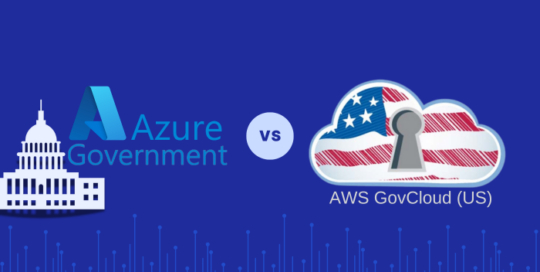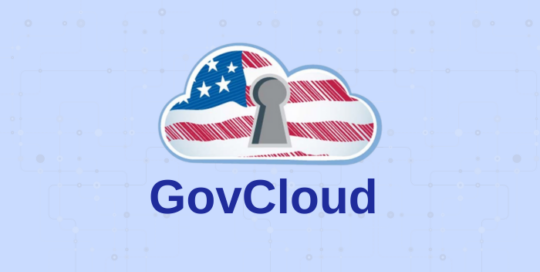Few organizations remain today without some of their business operating in the cloud. According to a study from 451 Research, part of S&P Global Market Intelligence, 96 percent reported enterprises using or planning to use at least two cloud application providers (Software-as-a-Service), with 45 percent using cloud applications from five or more providers. In 2024, global spending on public cloud services is expected to reach $679 billion, surpassing $1 trillion by 2027.
Most companies move to the cloud to take advantage of cloud computing solutions’ speed, innovation, and flexibility. Cloud operations can also provide cost savings and improved productivity.
However, controlling cloud costs has become increasingly difficult and complex as cloud adoption grows. That is why cloud cost management has become a priority for CIOs to understand the true ROI for cloud operations.
When cloud assets are fragmented across multiple teams, vendors, and containerized environments, it is easy to lose sight of the budget. As a result, cloud financial management is a must-have for understanding cloud cost and usage data and making more informed cloud-related decisions.
Plus, it’s an opportunity for more savings! According to McKinsey, businesses using CFM can reduce their cloud costs by 20% to 30%.
But what exactly is Cloud Financial Management (CFM)? Is it merely about cutting costs? What kind of tools are best for multiple cloud environments? If you have these and other questions, we have the answers. Let’s jump in!
Table of Contents:
<h2id=”toc-what”>What’s Cloud Financial Management?
Cloud Financial Management is a system that enables companies to identify, measure, monitor, and optimize finances to maximize return on their cloud computing investments.
CFM also enhances staff productivity, workflow efficiency, and other aspects of cloud management. However, it is important to remember that while cost is a major focus, it’s not the only one.
A subset of CFM is FinOps, which is essentially a combination of Finance and DevOps. The idea behind FinOps is to foster collaboration and communication between the engineering and business teams to align the cost and budget to their technical, business, and financial goals.
Cloud Financial Management Benefits
Better Track Cloud Spend
Cloud Financial Management helps companies oversee operations, tasks, and resources that drive usage billing. This insight can be used to identify projects, apps, or teams that are driving your cloud costs.
Optimize Cloud Costs
With visibility into cloud resources and spend, your organization can identify and remove unutilized resources, redundant integrations, and wasteful processes.
Financial Accountability
Instead of reacting to unexpected cost spend and spikes, cloud financial management allows businesses to plan and predict budgets by making delivery teams financially accountable. By aligning cloud financial data to business metrics, organizations can establish common goals and outcomes.
Cloud Financial Management Challenges
Budgeting
Migrating from on-premise to the cloud often means transitioning from a CapEx to an OpEx model. On the surface, switching to a predictable OpEx-based strategy seems attractive. However, the change can create more issues than it solves.
Optimizing costs is the biggest driver for moving to OpEx. However, cloud spend is vulnerable to waste and overspend if not carefully managed. Many companies haven’t reaped the expected cloud benefits due to poor visibility and control. Some have taken the dramatic step of ‘repatriating’ workloads while others have adopted a hybrid approach.
Visibility Into Cloud Assets and Usage
Monitoring cloud assets makes or breaks FinOps. But employees often find it challenging to track asset performance, resource needs, and storage requirements. Tagging offers a simple solution, allowing easy categorization of cloud assets by department, performance, usage, costs, and more.
Even when you look at the infrastructure, there are numerous departments in an organization, and there are different purposes for them to use the cloud. So, unless and until there is a proper tagging system for these departments, operations, and costs, it is very difficult to monitor cloud assets.
Calculating Unit Costs
The unit cost calculation becomes a tedious job, considering the complexity of the cloud infrastructure and the sheer number of assets. In addition, calculating and comparing the investment and the revenue being generated becomes difficult when there are so many multiple interdependencies.
Identifying Inefficiencies
Companies that lack full visibility into cloud spend find it difficult to identify where there are inefficiencies, waste, or overuse of resources. The result is that decisions can’t be made regarding the efficient allocation of resources, and companies are in the dark regarding questions such as whether an increase in spend results from business growth or from sheer inefficiencies.
Building a Cloud Center of Excellence
A Cloud Center of Excellence (CCoE), or FinOps practice, is an important next step for companies using ad hoc methods for cloud cost management. A CCoE provides a roadmap to execute the organization’s cloud strategy and governs cloud adoption across the enterprise. It is meant to establish repeatable standards and processes for all organizational stakeholders to follow in a cloud-first approach.
The CCoE has three core pillars:
- Governance – The team creates policies with cross-functional business units and selects governance tools for financial and risk management.
- Brokerage – Members of the CCoE help users select cloud providers and architect the cloud solution.
- Community – It’s the responsibility of the CCoE to improve cloud knowledge in the organization and establish best practices through a knowledge base.
With those pillars as a foundation, CCoEs are generally responsible for the following activities:
- Optimizing cloud costs – Managing and optimizing cloud spend is a key task of the CCoE. They are also accountable for tying the strategic goals of the company with the cost of delivery value in the cloud.
- Managing cloud transformation – In the initial phase of transformation, the CCoE should assess cloud readiness and be responsible for identifying cloud providers. During migration, the team should provide guidance and accurate reports on progress.
- Enforce cloud policies – Security and regulatory requirements can change frequently in complex and changing cloud ecosystems. It’s important that CCoE members enforce security standards and provide operational support across the business.
Anodot for Cloud Financial Management
Anodot’s Cloud Cost Management solution helps organizations get a handle on their true cloud costs by focusing on FinOps to drive better revenue and profitability.
From a single platform, Anodot provides complete, end-to-end visibility into your entire cloud infrastructure and related billing costs. By tracking cloud metrics alongside revenue and business metrics, Anodot helps cloud teams grasp the actual cost of their resources.
Anodot’s 7 Core Features for Cloud Success
Forecasting and Budgeting with 98.5% Accuracy
Use historical data to predict cloud spending and usage based on selected metrics and changing conditions to make necessary adjustments to avoid going into the red.
Cost Visibility
Manage multi-cloud expenses on AWS, Azure, Google Cloud, and Kubernetes with customizable dashboards, multi-cloud cost tagging, and anomaly detection.
Real-Time Cost Monitoring
Monitoring cloud spend is quite different from other organizational costs in that it can be difficult to detect anomalies in real-time. Cloud activity that isn’t tracked in real-time opens the door to potentially preventable runaway costs. Anodot enables companies to detect cost incidents in real-time and get engineers to take immediate action.
Saving Recommendations
Get 80+ CTA recommendations throughout all major cloud providers and enjoy a 40% reduction in annual cloud spending.
Real-time Alerts & Detection
Eliminate uncertainty surrounding anomalies through precise, targeted notifications and machine learning (ML) models. Stay consistent with cloud activity by analyzing data to accurately differentiate normal fluctuations from actual risks, thereby minimizing false positives.
360° View of the Multicloud
Never waste time searching for a spending transaction again. Simplify cost management with an all-in-one platform offering billing flexibility and cost allocation for enterprise and MSP models.
AI Tool for Cloud Spending
With a simple search, cloud cost management can be automated with CostGPT. Get instant answers to address common cost challenges, including complex pricing models, hidden costs, and inadequate monitoring and reporting.
Automatic Savings Trackers
Track the effects of applied recommendations using automated savings reports and a savings tracker.
CFM just got a lot easier with Anodot. Try it out and see the difference.
Start Reducing Cloud Costs Today!
Connect with one of our cloud cost management specialists to learn how Anodot can help your organization control costs, optimize resources and reduce cloud waste.





